Scarring Alopecia – Types, Causes, Symptoms, And Treatments
A guide to help you uncover the causes, symptoms, and treatment options for scarring alopecia.
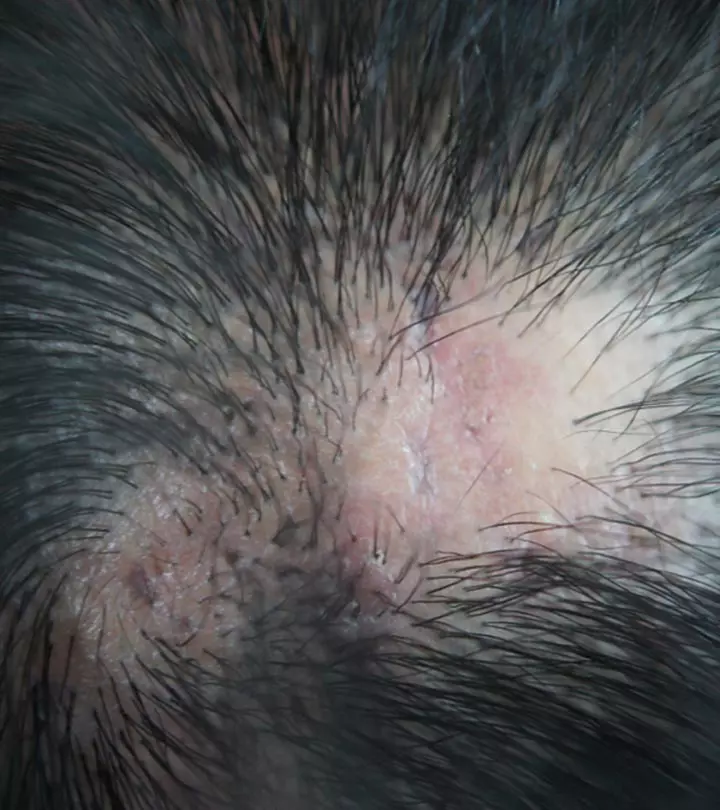
Image: Shutterstock
Hair loss can be due to various reasons. It may be due to a poor hair care regimen, or it may indicate any underlying condition at times. One such condition is scarring alopecia, a type of baldness. It leads to hair follicle destruction and is triggered by inflammation. However, it is not contagious but may cause emotional distress and embarrassment. Read on to know more about its causes, symptoms, and ways to manage it.
In This Article
What Is Scarring Alopecia?
Scarring alopecia or cicatricial alopecia is an inflammatory hair loss disorder where the hair follicles are permanently damaged, resulting in bald patches on the scalp (1). The tissue surrounding the hair gets replaced with fibrous tissue. The hair loss may start off gradually and without any specific symptoms in the beginning.
Wondering what could trigger this type of hair loss? Find out in the next section.
Key Takeaways
- Scarring alopecia is an inflammatory hair loss disorder where the hair follicles are permanently damaged.
- Possible causes for scarring alopecia include genetic predisposition, faulty lipid metabolism, and compromised immune system.
- Scarring alopecia starts as small, ragged bald patches on the scalp that progress over time.
What Causes Scarring Alopecia?
The exact cause of scarring alopecia is not yet known. This type of hair loss is associated with inflammation, destruction of hair follicles, and deposition of collagen. Some of the possible causes include genetic predisposition, faulty lipid metabolism, and compromised immune system. Anecdotal evidence suggests that improper hair care practices such as using relaxants or hot combs frequently can cause traction and lead to scarring alopecia.
 Pro Tip
Pro TipThese are some of the probable causes of scarring alopecia. Keep reading to find out the different types of this hair loss.
Types Of Scarring Alopecia
Scarring alopecia is classified into three major types:
- Primary: This type of hair loss is permanent as the stem cells in the hair follicles are permanently damaged. It is speculated that the immune cells such as lymphocytes and neutrophils are involved. Thus, it is further categorized as lymphocytic (lichen planopilaris) or neutrophilic (1). It is commonly observed in adolescent males.
Folliculitis decalvans is a neutrophilic inflammation of the hair follicles that may lead to hair fall and scalp scarring. Its symptoms include itching, tenderness, redness, scaling, crusting, sores, tightness on the scalp, etc. Further, it can also spread and affect other areas such as the armpits and legs. It can cause mild to extreme pain.
Factors such as genetics, infectious, allergic, or immunological factors may contribute to the development of this condition. It can also be triggered due to the hair follicles rubbing against clothing. These activities can cause damage to the hair follicles, making them more susceptible to infection (3).
- Secondary: The skin cells surrounding the hair follicles are inflamed, resulting in irreversible damage to the hair follicles. This is a common side effect of cancer, radiation therapy, or severe burns (1).
- Developmental/Hereditary: Like the name suggests, this type of hair loss is due to genetic factors. The exact mechanism is unknown, and research is still ongoing regarding this type of scarring alopecia.
Although scarring alopecia is irreversible in most cases, it can be managed to some extent by recognizing the symptoms on time. Scroll down to learn what are the most common telltale signs of scarring alopecia.
Symptoms Of Scarring Alopecia
- Scarring alopecia starts out as small, ragged bald patches on the scalp that progress over time, eventually leading to complete loss of hair (1).
- These patches have a shiny and smooth appearance due to a lack of pores or loss of follicular openings (1).
- This condition can be accompanied by various other symptoms such as pain, itching, or a burning sensation on the scalp (1).
- In a few cases, rough, scaly skin and pus-filled blisters have also been observed in scarring alopecia (1).
Find out the treatment options available for scarring alopecia in the next section.
Treatment Of Scarring Alopecia
Since hair growth is not possible due to the permanent damage of hair follicles, the best way to manage this type of hair loss is to minimize further hair loss (1). Some ways suggested to manage scarring alopecia include:
- Hair transplants on the bald areas as well as using wigs to cover the bald patches are often suggested.
- It is recommended to use SPF to protect the exposed skin.
- The inflammation can be controlled by prescribing corticosteroids or retinoids either orally or topically (1). In case of any side effects, consult a doctor immediately.
- Frontal fibrosing alopecia may be treated with oral dutasteride and topical calcineurin inhibitors.
 Quick Tip
Quick TipStephen Carver, a blogger, teacher and editor, shared about his alopecia journey in a blog post. He writes, “My advice to anyone struggling is to hang in there…. Try not to do what I did and avoid mirrors and photos. This slows down the adjustment. Also be aware that an appearance-altering condition is going to effect your self-esteem and therefore create some very negative thought patterns. Don’t trust your own view of what you look like. Other people aren’t seeing you the way you are. Also, you are not your hair. Don’t wait for it to stop or reverse either. This could be something you have long-term so the path to emotional recovery is acceptance (i)”.
Scarring alopecia is a form of hair loss that results in bald patches on the scalp. Since the hair follicles are irreparably damaged, there is no hope of hair regeneration. This condition may be caused due to an inflammatory response or, in some cases, burns or radiotherapy. Though some symptoms differ from person to person, it may cause signs of inflammation like itching, redness, and pain. Consult your healthcare provider, who may recommend a course of corticosteroids and retinoids to soothe scarring alopecia. If the bald patches make you uncomfortable or affect your self-esteem, you may try wearing wigs or opt for a hair transplant.
Frequently Asked Questions
Is scarring alopecia an autoimmune disease?
Scarring alopecia may be caused by autoimmune diseases like lupus, which may cause inflammation, leading to hair follicle damage and hair loss.
Can stress cause scarring alopecia?
Stress may cause or worsen hair loss. Some people dealing with stress have obsessive habits like pulling out their hair or picking at the skin on their scalp. This can lead to permanent hair follicle damage. In other cases, people with scarring alopecia may struggle with stress due to its impact on their social life and confidence levels, which in turn worsens hair loss.
Does scarring alopecia burn out?
If left untreated, scarring alopecia does burn out. The hair follicles get damaged, leading to a bald spot. The inflammation and irritation stop, and hair loss is localized to the bald patch.
What is the difference between scarring alopecia and alopecia areata?
Alopecia areata is an autoimmune condition that causes non-scarring hair loss and is, in most cases, reversible. Scarring alopecia is a type of hair loss that may be caused by multiple factors, including autoimmune conditions. Since it damages the hair follicles, it is irreversible.
Does PRP work for scarring alopecia?
PRP is a recommended therapy for non-scarring alopecia. Recently, some studies have recommended it for some types of scarring alopecia, like lichen planopilaris and frontal fibrosing alopecia (2), (3). However, more research is needed to determine its efficacy.
Can scarring alopecia be misdiagnosed?
Doctors can distinguish between scarring and non-scarring alopecia because of the damage to the hair follicles. And there are tests they can conduct to figure out the cause behind the condition. This minimizes any chances of misdiagnosis.
Here is a comprehensive video of alopecia with a renowned dermatologist. The video contains valuable insights into identifying, understanding, and effectively managing this challenging hair loss condition. This is hope for those dealing with scarring alopecia. Click here to watch!
Personal Experience: Source
StyleCraze's articles are interwoven with authentic personal narratives that provide depth and resonance to our content. Below are the sources of the personal accounts referenced in this article.
(i) My Alopecia Storyhttps://stephencarverauthor.wordpress.com/2016/04/15/my-story/
References
Articles on StyleCraze are backed by verified information from peer-reviewed and academic research papers, reputed organizations, research institutions, and medical associations to ensure accuracy and relevance. Read our editorial policy to learn more.
- Primary cicatricial alopecia: diagnosis and treatment
https://www.cmaj.ca/content/185/18/1579.short - Argan oil as a pretreatment of human hair before exposure to oxidative damage: Attenuated total reflectance and protein loss studies
https://pubmed.ncbi.nlm.nih.gov/35226791/ - Folliculitis decalvans and orofacial granulomatosis
https://www.ncbi.nlm.nih.gov/pmc/articles/PMC6041710/#:~:text=Folliculitis%20decalvans%20(FD)%20is%20a,erosions%20and%20scarring%20within%20scalp
Read full bio of Dr. Sergio Vañó Galván
Read full bio of Annie Jangam
Read full bio of Anjali Sayee
Read full bio of Monomita Chakraborty







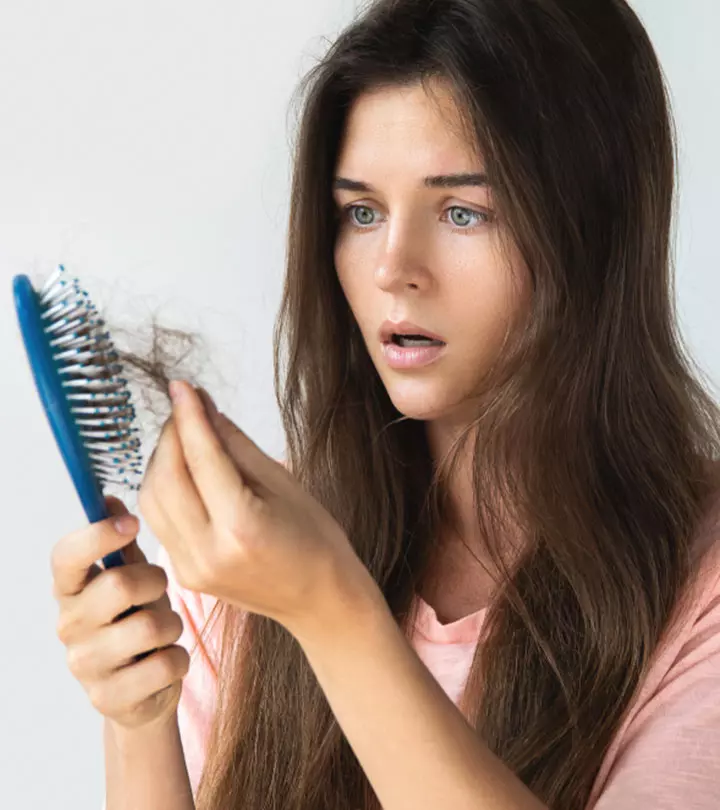

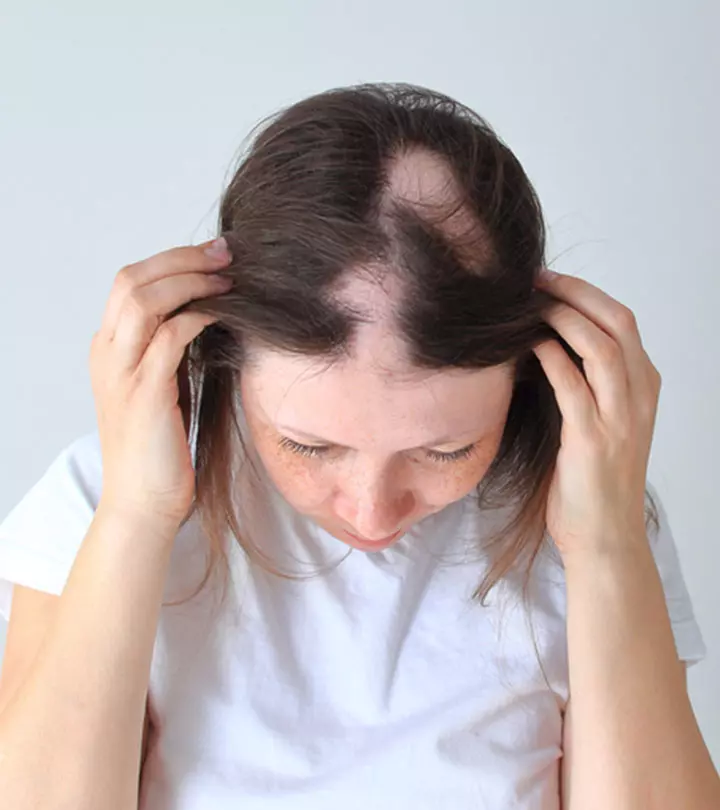
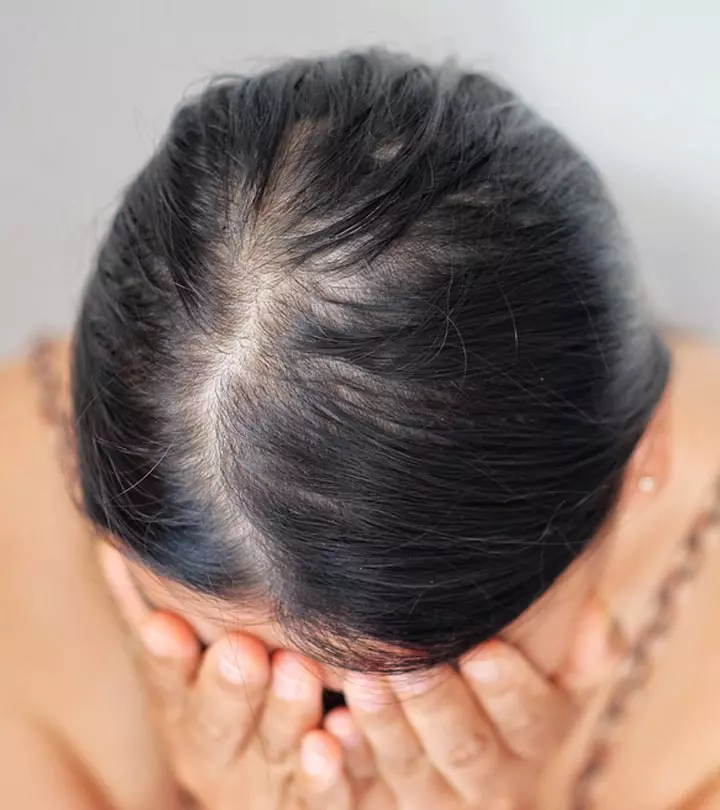

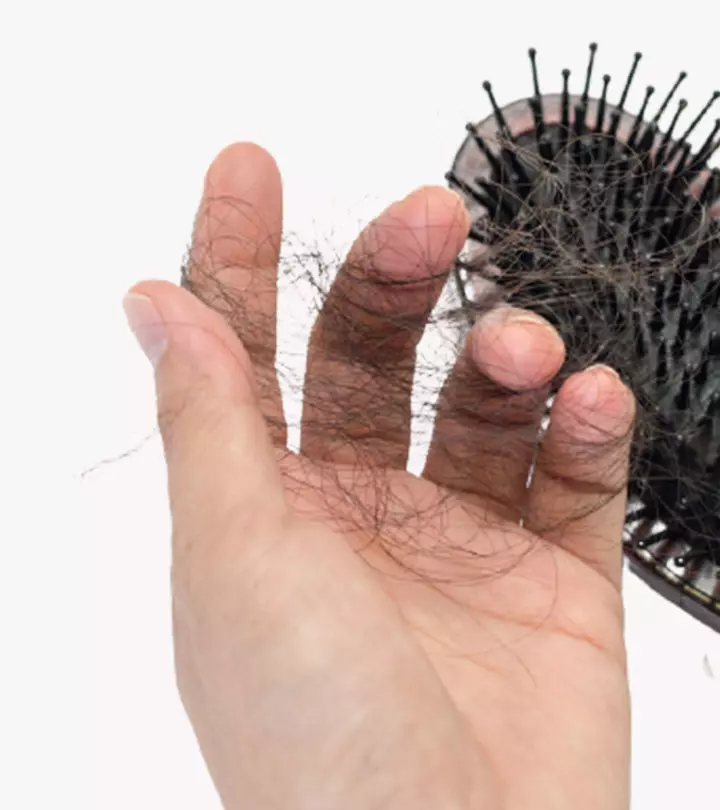
















Community Experiences
Join the conversation and become a part of our empowering community! Share your stories, experiences, and insights to connect with other beauty, lifestyle, and health enthusiasts.